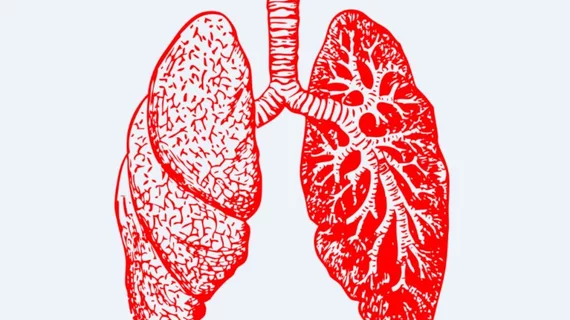Conventional MRI shows promise for measuring lung function in asthmatics
Conventional MRI has a new use in the clinical setting, Canadian researchers wrote in Radiology this month: measuring lung ventilation abnormalities in free-breathing patients.
A team led by Grace Parraga, PhD, a scientist at Robarts Research Institute and a medical biophysics professor at Western University in Ontario, Canada, found traditional 1H 3T MRI could be an effective technique for treating children and patients who are too ill to hold their breath during other imaging exams.
Parraga worked with a group of researchers funded by the Canadian Respiratory Research Network and the Canadian Institutes of Health to conduct a proof-of-concept study using MRI pulse sequences to measure abnormalities in freely breathing patients. The most severe asthmatics with poor breath control would likely be highly correlated with MRI specific ventilation and gas distribution abnormalities, they hypothesized.
According to the study, the group recruited 30 adult subjects for the trial—23 of whom had pre-established asthma—and ordered 1H MRI, static breath-hold hyperpolarized 3HE MRI, spirometry and plethysmography exams for each patient. In addition to gathering data, Parraga et al. said, the researchers also created a pipeline for analysis by collaborating with local clinicians and PhD students.
Both 1H MRI-derived specific ventilation and hyperpolarized 3HE MRI-derived ventilation were greater in healthy volunteers than in their asthmatic counterparts, the authors reported, though 1H MRI-derived specific ventilation correlated with plethysmography-derived specific ventilation and hyperpolarized 3H MRI-derived ventilation percentage in all cases.
“The ventilation abnormalities captured during patient breath-hold clearly and spatially correlated with abnormal specific ventilation measured in asthma patients who were free breathing,” Parraga told the RSNA. “From a translational point of view, this means that for patients, conventional MRI can be considered to help measure regional lung function in a physiologically relevant manner.”
Forced expiratory volume and ratio of residual volume to total lung capacity and airway resistance were also correlated in the final data, she wrote in the journal—and the results are promising.
“We showed the exact airways and parenchyma abnormalities from which the abnormal specific ventilation stemmed, and the measurement reflected the same abnormalities observed in patients using inhaled contrast agents in breath-hold,” Parraga said. “We would like to better understand how and where specific ventilation changes occur after anti-inflammatory therapy in patients with COPD and asthma.”

